By Trevor Hogg, special to Canadian Cinematographer Society
With permission to re-publish from the Canadian Cinematographer Society
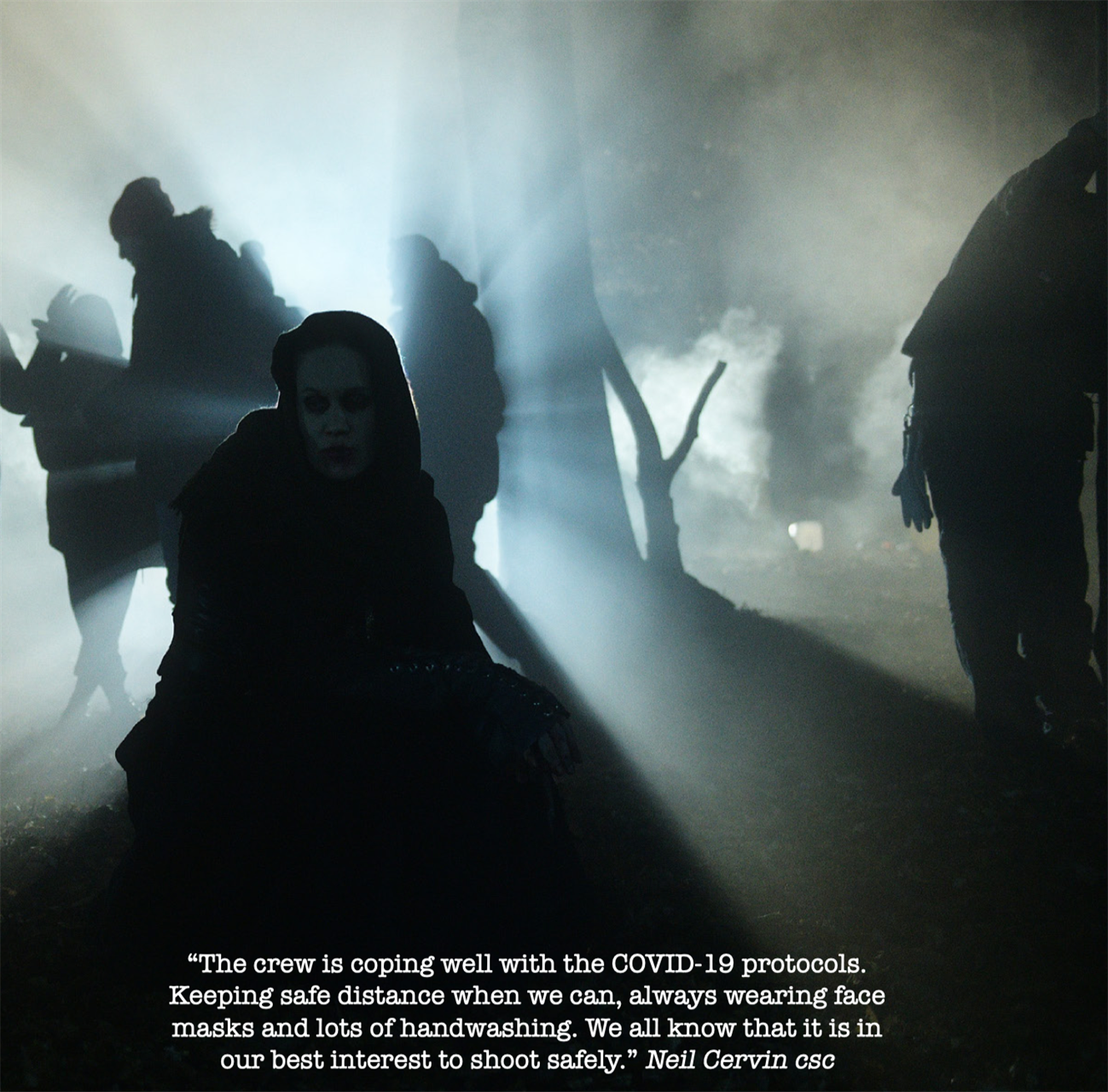
Photo credit: Mayo Hint
First appearing in New Teen Titans #21 (1982), Vanessa Van Helsing has graduated from comic books to carrying on the family tradition of eradicating vampires on the small screen in an American-Canadian co-production that is airing its fifth and final season on Syfy. Neil LaBute (In the Company of Men) created Van Helsing and was subsequently replaced in Season Four by Jonathan Walker (Wu Assassins). Also changing over up on the mythology of vampires and Van Helsing by re-watching some of the classics, such as Nosferatu and Dracula by Francis Ford Coppola,” Uegama explains. “I spent many hours gathering references and narrowed down hundreds of images for a look book that I presented to everyone. We tested a lot of things, such as blood, vampire makeup, and lighting them with firelight and sidelight.
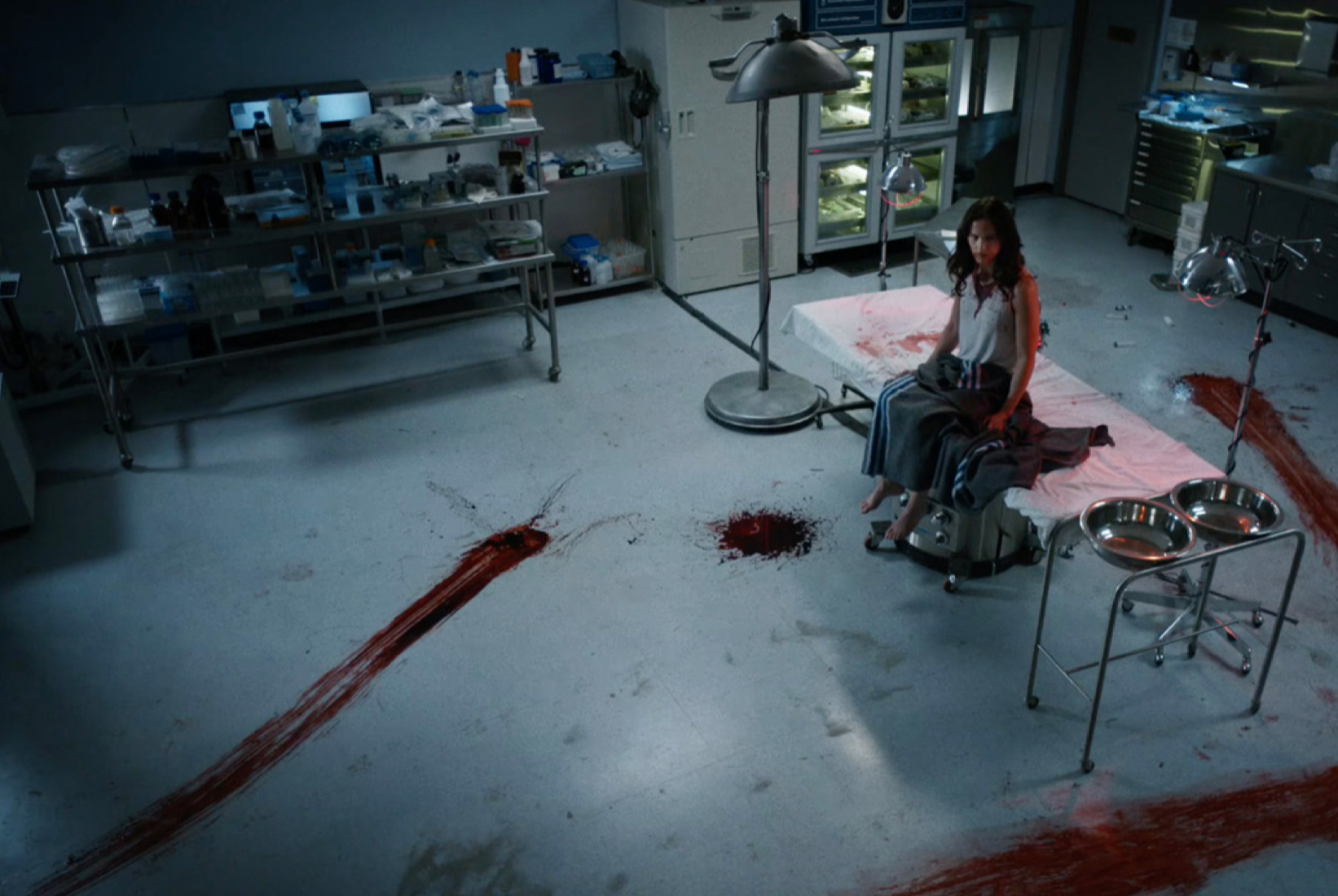 Credit: Courtesy of Nomatic Pictures
Credit: Courtesy of Nomatic Pictures
Kelly Overton as Vanessa Van Helsing in Van Helsing, Season 1.
Since it was a post-apocalyptic world and there was no power in the cities in our storyline, shooting night scenes in the course of the series have been the cinematographers, with Brendan Uegama csc (Child’s Play) being responsible for Seasons One and Two, associate member Ronald Richard (Dangerous Lies) shooting Season Three, Gerald Packer csc (Schitt’s Creek) lensing Season Four, and Neil Cervin csc (Arrow) taking charge of Season Five. “For the pilot, my research started with freshening the city could not be accomplished at true night due to the thousands of city lights we would need to paint out. Day for night became our solution.” Four weeks were spent in prep with director Michael Nankin (Stargirl), while principal photography for the pilot lasted 21 days. “Michael and I decided to allow scenes to play out and not get into ‘traditional coverage’ if we could avoid it,” Uegama states. “We talked about the characters’ emotional arc and if something was important to really highlight it, we would talk about how to do so.”
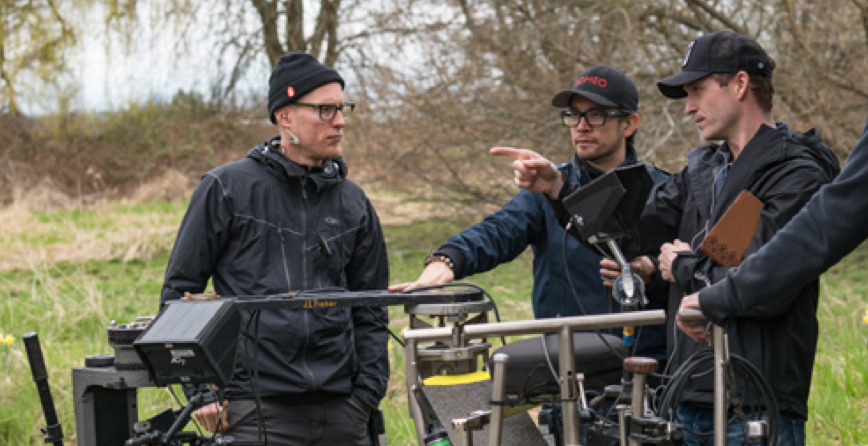
Credit: Daniel Power
(L-R) Camera operator Glen Dickson, Brendan Uegama CSC, and director Kaare Andrews
The aspect ratio was 1.78:1, while footage was captured 5K and often with three cameras. Seasons One and Two were captured on RED DRAGON cameras with Ultra Prime lenses, according to Uegama. Production was based in Vancouver. “Our studio was the old Canada Post building located right downtown,” the DP says. “Production designer James Hazell [Siren] built most of our sets for the first half of the season there. Story-wise, the characters were living in an abandoned hospital in downtown Seattle. At the end of Episode 107, they need to escape the hospital, and we spend the remaining episodes of the season on the road.” A constant from the beginning of Van Helsing has been lead actress Kelly Overton, who was pregnant while shooting the second season. “Kelly is a rock star,” Uegama remarks. “She would come in and do her work day after day. Our typical approach was to shoot out her dialogue or any shots we would see her face, then let her go, and clean up the scenes with her double. On a visual side, we had to try and be as conscious as possible at hiding her belly. Wardrobe helped the best they could by dressing her in black with a partial cloak that would help hide from side angles.”
Blood, gore and violence are natural extensions of the subject matter. “We wanted to make sure the blood read on screen, but we wanted to keep it darker when used on vampires and redder when it came from humans,” Uegama says. “We also decided in prep that we wouldn’t use squibs for any gunshots. We knew right away that would always be done with visual effects. But when it came to blood on an actor or on the ground, we used a lot of it! As for the gore and violence, the network wanted it to be gory.”
Using the visual language established by Uegama as a guide, Richard took over for Season Three. “I knew Brendan from shooting second unit on Riverdale and talked to him about the process for Van Helsing,” Richard recalls. “Neil LaBute loves doing things that he hasn’t done before, which opened a giant sandbox for me as a DP. I told him what I liked and would do differently. I wanted to have long takes and lots of camera movement accelerating the story forward. I do a lot of gimbal on a pipe where you treat it like a Technocrane that can go anywhere except vertically. We would elaborate and create these long shots. Neil liked that approach. We were in a doctor’s office set and I remember looking through an orange needle tray with the camera to see what that would look like. Neil loved it and said, ‘Let’s make a filter out of that piece of plastic.’ He wanted it burned in.”
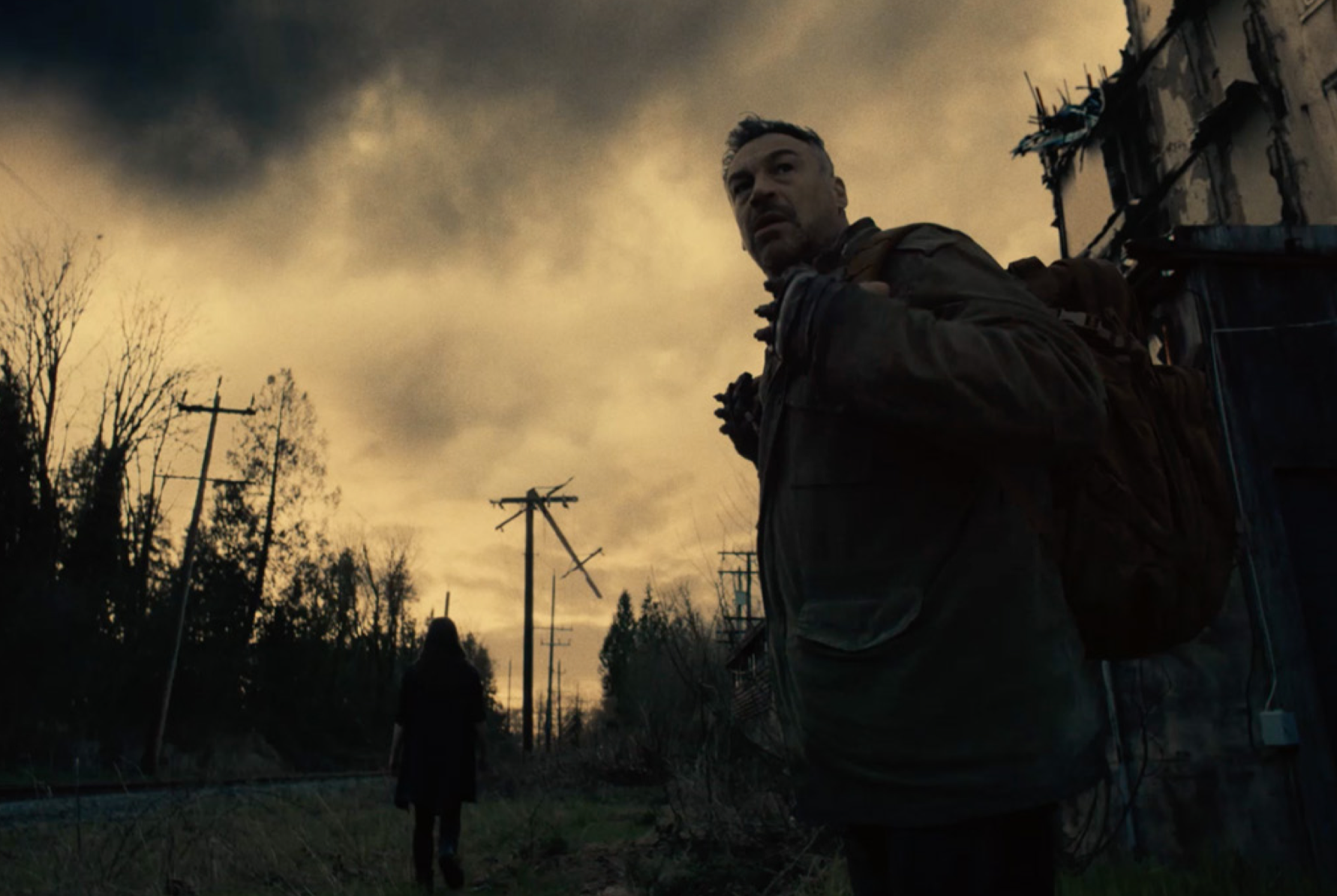
Credit: Courtesey Nomadic Pictures
Aleks Paunovic as Julian in Van Helsing, Season 2
Six days of principal photography were devoted to each episode. “There was no alternating DP, so a lot of it was based on instinct because you would only get to prep ahead so far,” Richard says. “Your gaffer and key grip would come back, and the production designer would show you a couple of photos. You would have to come up with a plan for what you’re going to do in three days when you go and shoot there without ever seeing the location.”
Shooting blocks were determined by locations rather than episodic order. “The show was literally 90 per cent location shooting, and they would augment by putting in or changing a wall. It was hard because you’re limited by where the windows are, and you can’t pop in a ceiling. The production designer [Grant Pearse] made sure that I had options,” Richard offers.
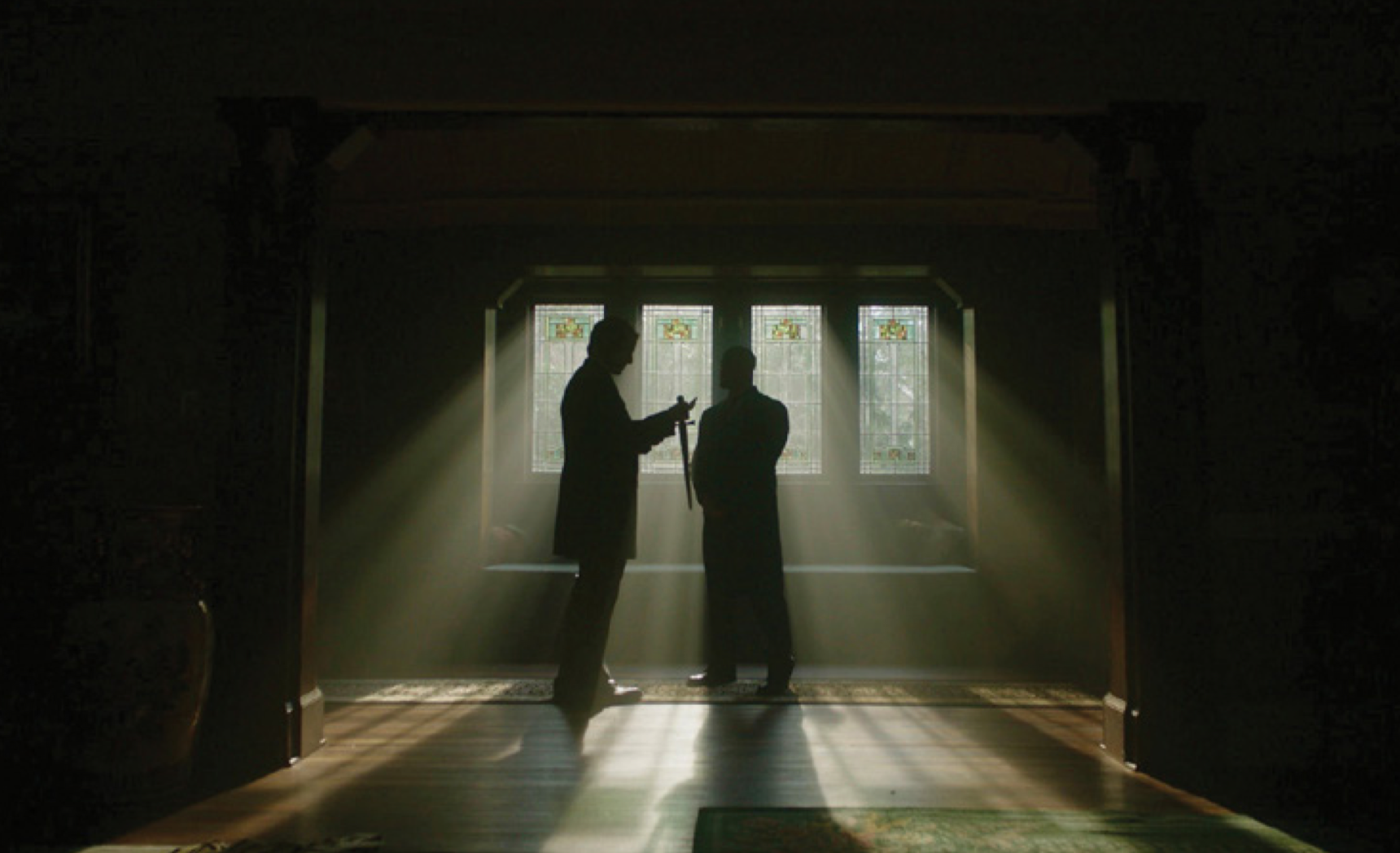 Credit: Courtesey of Nomadic Pictures
Credit: Courtesey of Nomadic Pictures
Van Helsing, Season 3.
A big change in Season Three was the emergence of Daywalkers, which meant that the series was no longer confined to nighttime settings. “It opened the door for us to embrace sunlight,” Richard eplains. “Shooting outdoors was faster as I didn’t have to set up a bunch of stuff. You position things according to the sun; that was the hardest part with some directors as the sun would be in the wrong spot for the blocking that they had in mind.”
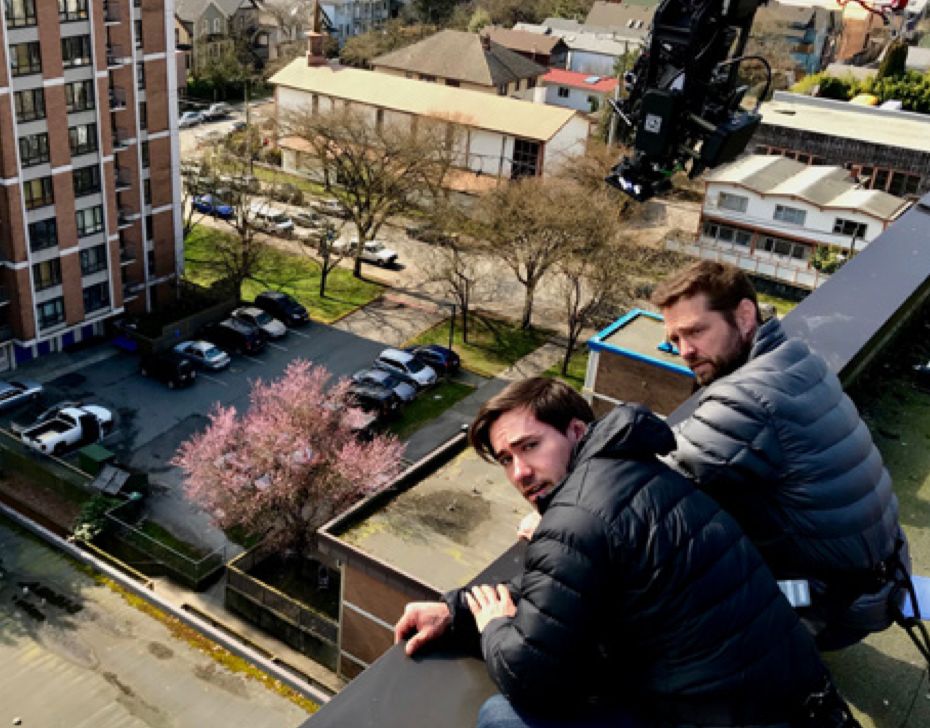
Credit: Courtesy Ronald Richard
(L-R) Ronald Richard with director, Jason Priestley on the set of Van Helsing, Season 3
The footage was captured with the ALEXA Mini camera and ARRI Master Primes lenses. “I wanted to shoot with a lower light and shallow depth of field, so I upgraded to the Master Primes,” he explains. “It has the same look as the Ultra Primes, but you can shoot a lot faster. We used wide lenses for 80 per cent of the show.” Problems were solved by creative solutions. “It stimulates you in a way that is enjoyable. Van Helsing embraced the risk because the potential reward was greater than playing the safe way.”
Replacing Richard for Season Four was Packer, who got to work with new showrunner Jonathan Walker. “Jonathan wanted to change things up a lot. It was a whole new crew; he and [executive producer] Michael Frislev wanted more camera movement and more fights handheld,” Packer recalls. “Just more immediate frenetic stuff. We followed lighting and certain things, like the last episode of Season Three was a cliffhanger where they are fighting in a mausoleum, and Episode 401 picks up in the middle of that fight.”

Credit: Courtesy Nomadic Pictures
(L-R) Aleks Paunovic as Julius and Rowland Pidlubny as Scab in Season 4.
A significant story decision was made with the focus shifting towards the children of Vanessa Van Helsing hunting vampires, he adds. “There is a lot of license for what you can do once you start changing the story. However, you don’t want to change everything when you have three seasons of fans.”
Lighting is essential in retaining a consistent look going from director to director. “A lot of directors are going to have their own ideas about how they want to cover a scene,” Packer observes. “You have a time limit, so you try to do it as economically as possible.” There was a balance shift in favour of studio shooting with the production being based in Surrey, B.C. “I used an ALEXA Mini and had a set of Leica Summilux lenses. We used a Ronin on a crane, dolly and handheld or on a SlingShot rig,” he says. “When using the Ronin, you have to rebalance it every time you put a new lens on. But you can pop Simmilux lenses off in moments without adjusting. The camera was always moving. I wanted to get some nice staccato images. We tried to get a lot of coverage for the action and worked with two cameras all of the time, plus a third for fights. I had a 29 mm right in there to get a closeup and moved the camera with the actors as they fought.”
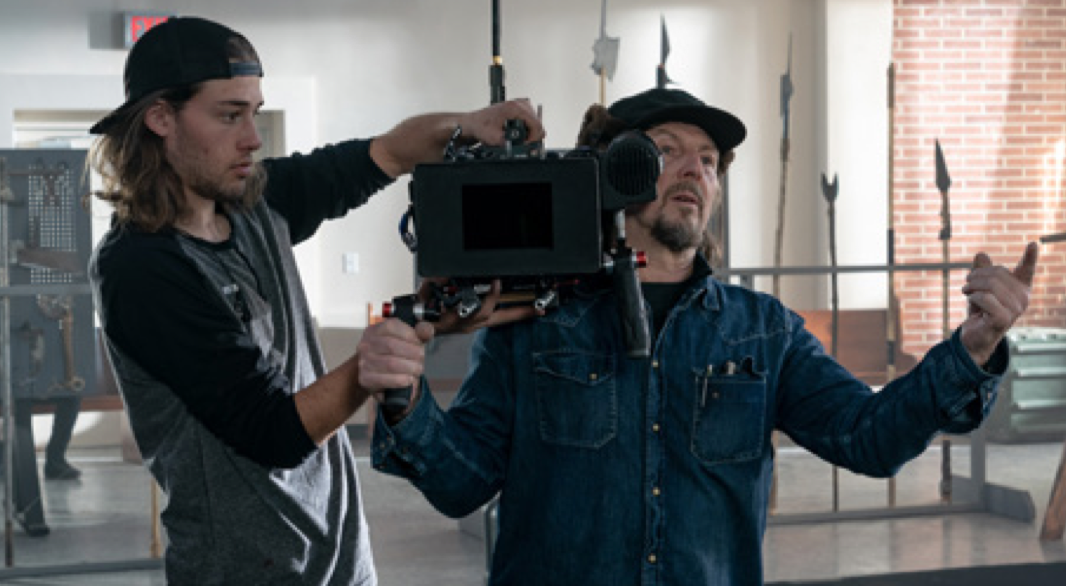 Credit: David Power
Credit: David Power
Gerald Packer CSC (right) and a camera assistant on the set of Van Helsing, Season 4
Fights are trademark of Van Helsing, with stunt visualization put together by the stunt department. “With stunts and fights you have to get the right angle so that the punches look like they’re actual punches not Batman and Robin stuff,” Packer notes. “What was great about the stunt guys is that they really understood where a punch did and didn’t work and knew where the camera should be.”
Various methods were deployed to distinguish between the past, present and future. “For the past, I desaturated the colours, had more contrast and a different blue than was in the room. It was treated again in post. The director wanted to do the flashback episode in one take, so the 42-minute show is a series of seven one-ers. It added a whole level of tension. It makes you feel that you’re in the room with these girls getting chased by zombies.”
Reflecting on Season Four, Packer adds, “The biggest challenge was getting the work done and the right amount of footage during the day. You had to keep moving forward.”
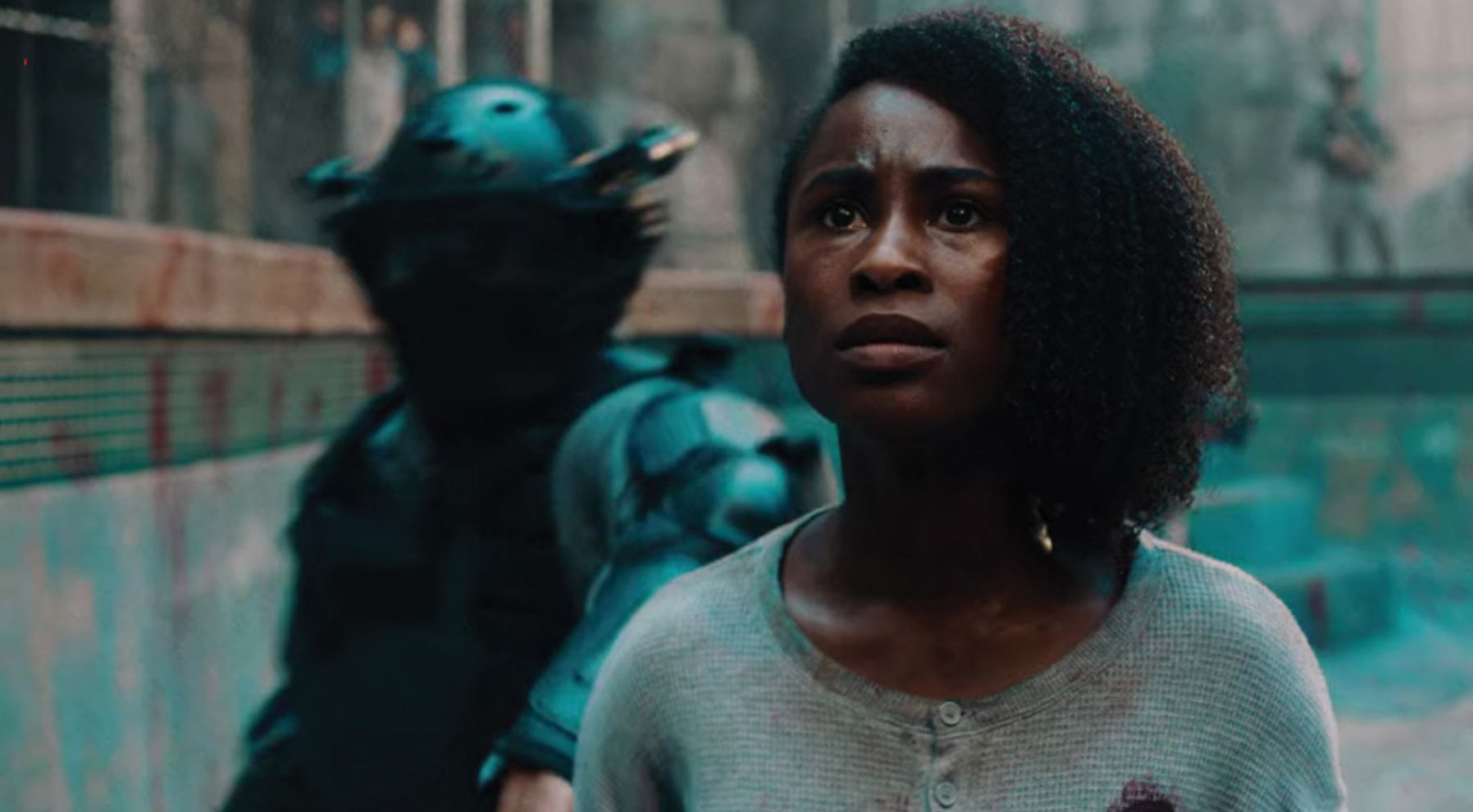
Credit: Courtesy Nomadic Pictures
Keeya King as Violet Van Helsing in Season 4.
After lensing episodes for Seasons Two, Three and Four, Cervin – who this summer won a Leo Award for Best Cinematography Dramatic Series for the Season Four episode “Miles and Miles” – was in the midst of shooting the fifth and final season when the COVID-19 pandemic shut down the production. “I shot Episodes 501, 502 and 503 in Slovakia before they closed that country down, and I got involved with the Kamloops, B.C., shoot where we did episodes 505 and 506. Afterwards I got asked to do the rest of the show.”
Often shots were combined, and the resolution went from 4K to 6K if a frame was going to be extracted later in postproduction. “There was one scene that we were doing in Kamloops last year where the sun was going in and out of clouds, so I had an 18K in line with the sun,” Cervin recalls. “It was the only way to keep it going and stay on schedule.”
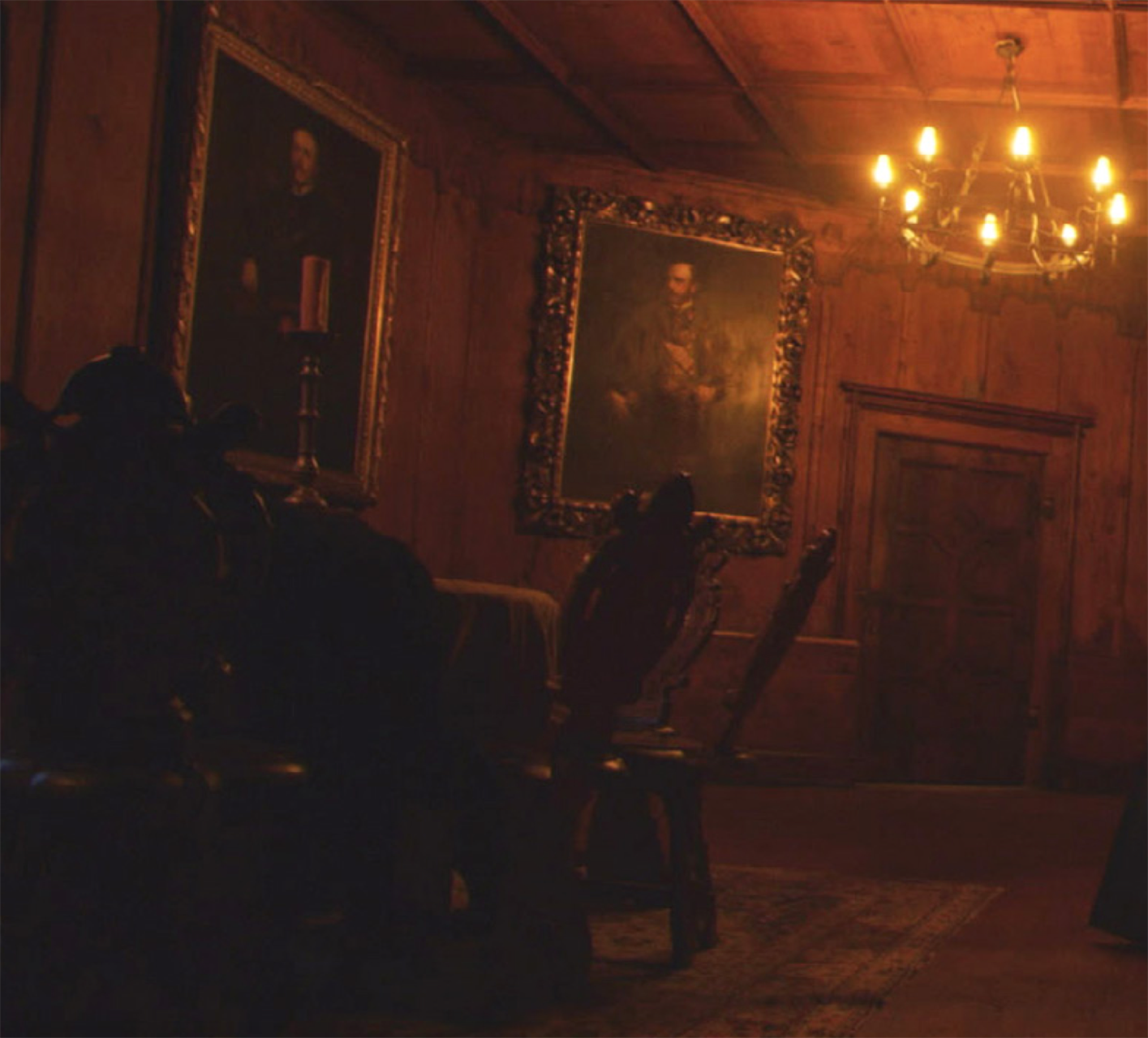
Tricia Helfer as Dracula in Van Helsing, Season 5.
The camera package was altered for the principal photography in Slovakia as the scenes take place during the Middle Ages. “Most of it was going to be shot with candles and moonlight,” Cervin explains. “It’s a vampire show so there were going to be a lot of night shoots. I went for a camera that would give me 6K, which was the RED MONSTRO with a Helium sensor that actually does 8K and looks good in low light. I used Vantage lenses that are T1, which is amazing because normally lenses are T1.4. I got those for the big castle exteriors. When we were doing stuff in the castles I was going for wide lenses, 12 mm, 14 mm and 17 mm. These castles were the most amazing locations that I’ve ever been in my life.” Lighting needed to be augmented. “There are these fantastic lights made by Astera called Titan and Helios,” he says. “The Titan is a 4-foot tube and the Helios is a 2-foot tube; they throw out a bit of light, come with some light controls, you can put eight of the four-footers in one big soft light rig, which a guy can pick up with one hand, and both of them have internal batteries that can last for ages. The Astera tubes were nicer than actual candlelight flicker and are easy to rig.”
Following the COVID-19 film production lockdown, the remaining episodes were set to be captured with a revamped camera system. “We are getting lovely images from the Sony FX9, but it’s not as production friendly as the VENICE,” Cervin states. “It does 6K but samples down to 4K. We’re shooting Super 35 all the way through.” The camera change will not be visually jarring as the rest of the season occurs in the future. “We’re also going to be using a Z CAM. It’s made in China and has 15 stops of latitude. It’s basically a 3-inch cube with a hole for a PL lens mount. We’re going to use that on a Ronin. It’s such a tiny camera that it can go anywhere; that’s 6K and is connected to a wireless.”
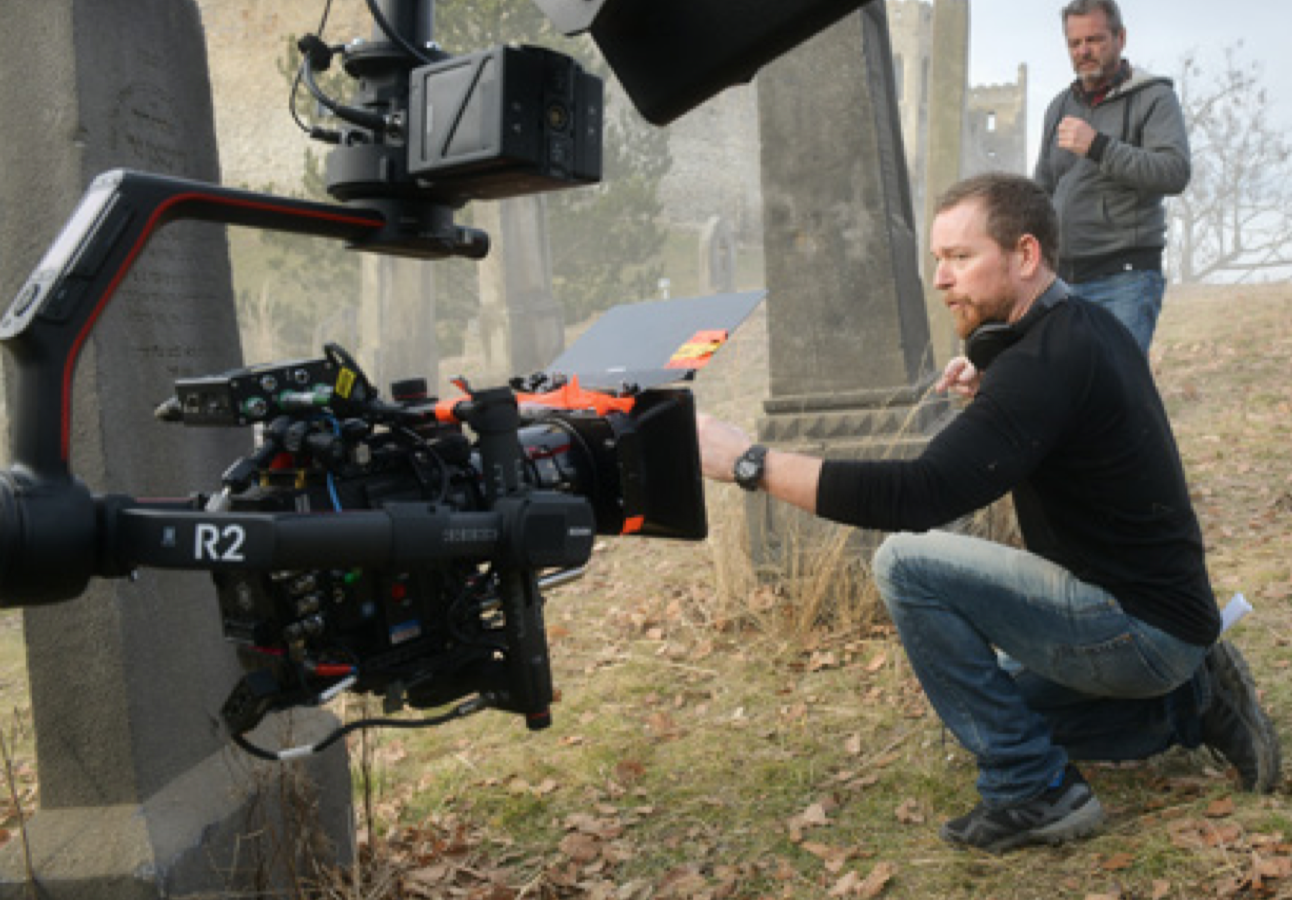 Credit: Mayo Hirc
Credit: Mayo Hirc
(L-R) Director Jonathan Scarfe and Neil Cervin CSC on the set of Van Helsing, Season 5.
Life on set has been impacted by the pandemic. “The crew is coping well with the COVID-19 protocols. Keeping safe distance when we can, always wearing face masks and lots of handwashing. We all know that it is in our best interest to shoot safely,” he says.